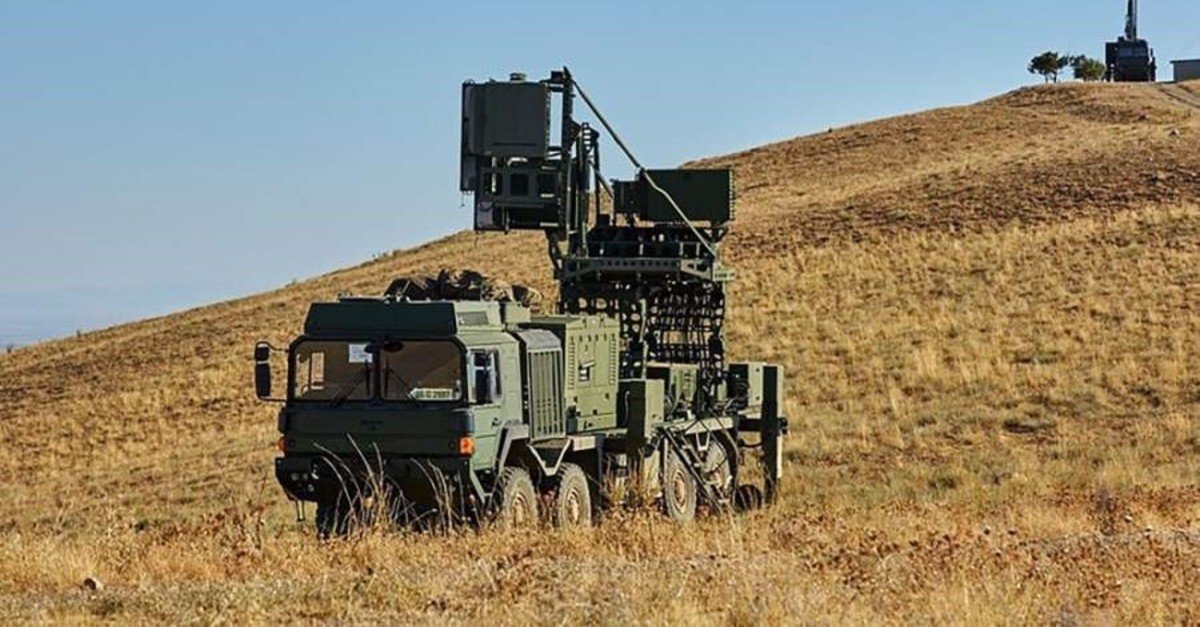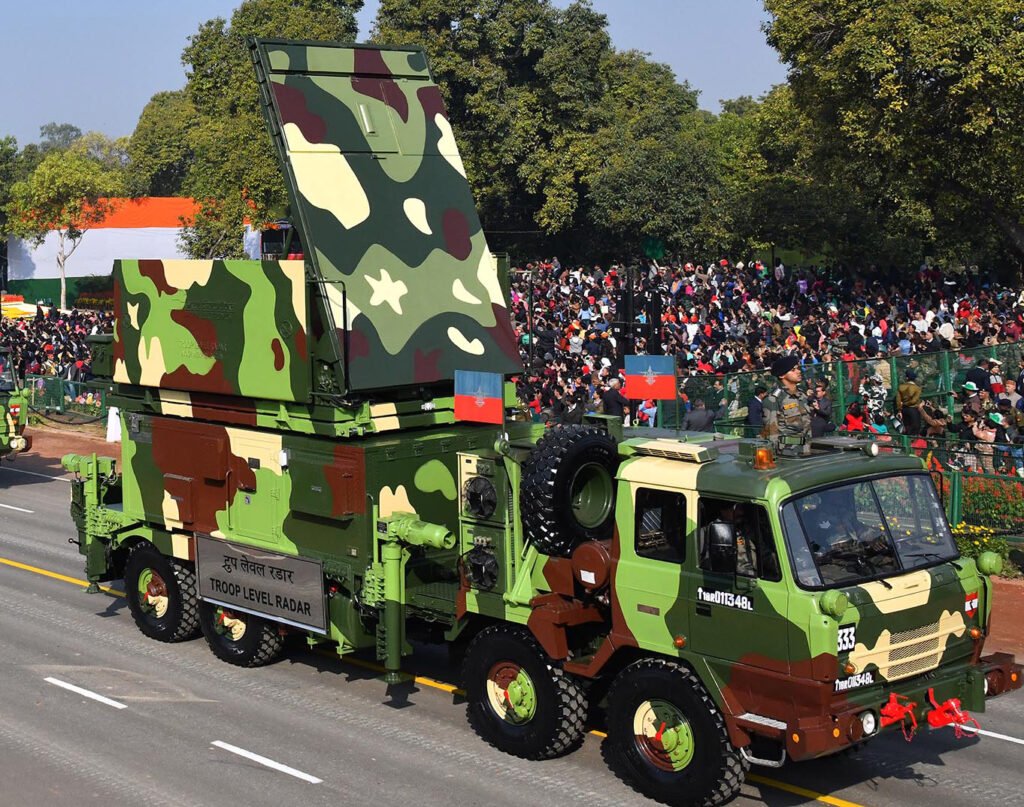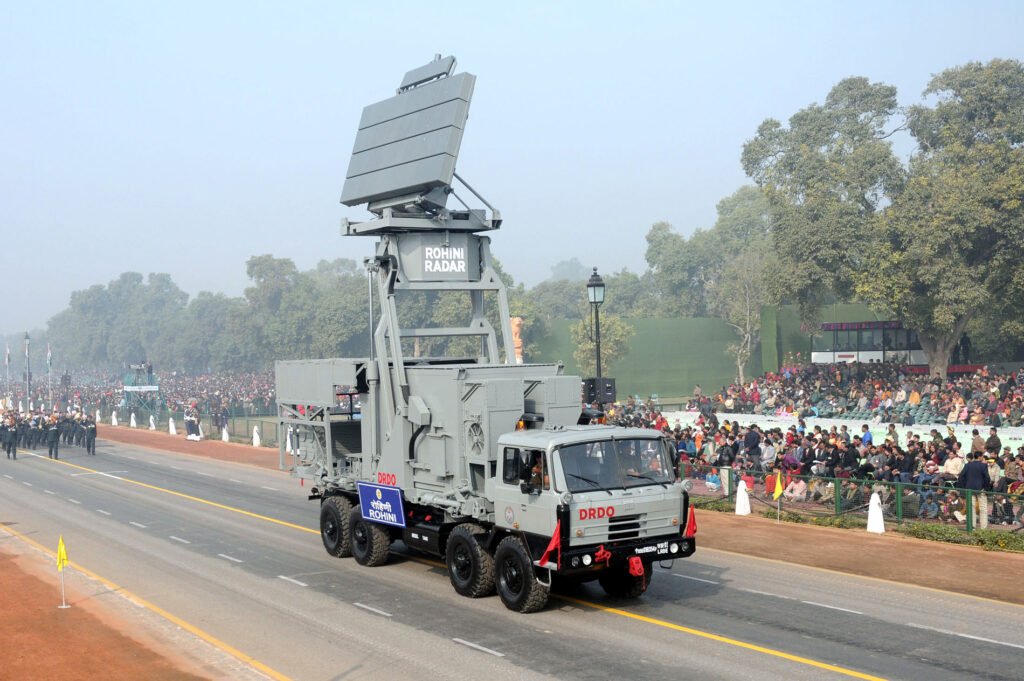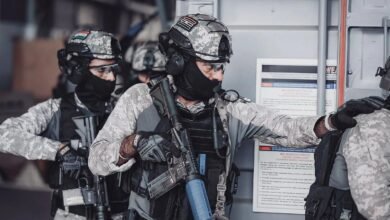Explained: All Mobile Radar Systems Developed By DRDO

Hello defense lovers! In this article, we are going to discuss the Mobile radar systems developed by our Defence research and development organization (DRDO) for our armed forces.
What Is A Radar?
Radar is a detection device that uses radio waves to determine the range, angle, or velocity of objects flying in the air. It can be used to detect a large l variety of items such as aircraft, artillery shells, UAVs, and even ground-based vehicles. A radar system consists of a transmitter that produces electromagnetic waves corresponding to the microwave or radiowave section of the spectrum, a transmitting antenna, a receiving antenna (which are often the same), and a receiver and processor to determine the properties of the object. Radio waves transmitted from the transmitter reflect off the object and return to the receiver, giving information about the object’s location and speed.
Mobile radar systems are very crucial in modern warfare. These can be deployed anywhere in a short duration of time. The enemy might not know the location and thus are difficult to engage. Mobile radar systems have greater survivability and extend the tracking and surveillance range.
Rajendra Radar
Rajendra Radar is a multi-function electronically scanned phased array mobile Radar sytem. It is the primary sensor ( At the troop level) for the Akash weapon system. It has a capability to perform an extensive search in 90 km of range. It can track multiple targets and incomming missiles and also provide command guidance to the missile simultaneously. It also has waveform agility. It can engage upto 4 targets with 8 missiles simultaneously. It has a decent full load tracking capacity of 64 targets simultaneously. It operates in a cued acquisition and in different search modes. It is usually operated remotely from the control center.
Swathi Weapon Locating Radar

Weapon Locating Radar (Swathi) passes through the Rajpath during the full dress rehearsal for the Republic Day Parade-2018, in New Delhi on January 23, 2018.
Swati Weapon Locating Radar is an electronically scanned Active phased array radar. The radar can automatically locate hostile artillery, mortars, and rocket launchers and can track friendly fire to locate the impact point of friendly artillery fire to make necessary corrections in the firing. Swati is designed to detect projectiles with a small cross-section across the battlespace horizon and also has the capability to track simultaneous fire from weapons deployed at multiple locations. Swati uses advanced signal processing techniques for detection and tracking projectiles in the presence of all forms of interference in the Electronic Warfare (EW) scenario. Its advanced algorithms for trajectory computation take even environmental parameters into account while estimating both launch and impact points for the desired accuracy. Swati radar is designed for high mobility, rapid deployment, and decamp. Its physical profile consists of radar shelter, antenna, and cooling mechanisms that are placed on a mobile platform. The entire system is designed to survive the physical rigors of the battlefield and soft hostile electronic warfare.
Ashwini Radar
The Indian Air Force’s Ashwini Radar is a Low-Level Transportable Radar. It has a 4D active array technology Aswini is a multifunctional capable of pinpointing highly maneuverable targets with outstanding accuracy. In addition to the range, azimuth and height, the Ashwini aslo provides the velocity vector of the incoming target. Thats why its called a 4D Radar. It provides situational awareness against high-speed fighter aircraft at ranges upto 200 kilometers. The IAF has planed the procurement of 18 such radars as a follow-on to the Rohini radar system. The radar underwent trials beginning in 2014 and entered service roughly in 2018.
INDRA Radar
The Indian Doppler Radar (INDRA) also called Low Flying Detection Radar series of 2D radars were developed by Electronics and Radar Development Establishment (LRDE) Lab of Defence Research and Development Organisation (DRDO) for the Army and the Air Force. These are produced by Bharat Electronics(Bharat electronics is the production partner of LRDE). The INDRA-I is a mobile surveillance radar for low-level target detection while the INDRA-II is for ground-controlled interception of targets. These radars are used to track a variety of aerial targets including highly manoeuvrable targets. It works on the L band frequency. It has a tracking range of 90 Km and can track 200 targets at a time. It can be deployed in about 60 minutes. Indian Armed forces operate these Radar systems in significant numbers. These radars were exported to Srilanka as well.
Rohini Radar

The Rohini Radar DRDO passes through the Rajpath during the full dress rehearsal for the Republic Day Parade-2010, in New Delhi on January 23, 2010.
The Rohini Radar is a 3D multi-function medium-range air surveillance radar mounted on a modified heavy Bharat Earth Movers Limited (BEML) Tatra truck and supported by a mobile auxiliary power unit. The Rohini radar system has been developed by LRDE Lab of Defence Research and Development Organisation’s (DRDO) and engineered as well as produced by Bharat Electronics Limited (BEL). The two companies Larsen & Toubro (L&T) and Astra Microwave also provided their valuable expertise during the Rohini’s development. The Indian Air Force (IAF) has a requirement for 100 such radars with the first delivered in August 2008.
Rohini can detect and track multiple targets flying simultaneously and determine their position. Its horizontal detection range is up to 170 km and 15 km in altitude. The Rohini radar system can detect low altitude targets as well as supersonic aircraft flying at up to Mach 3. It is capable of tracking maneuvering targets as well. Rohini is equipped with Electronic Counter Counter Measure (ECCM) capabilities including frequency agility and jammer analysis. Also, a secondary surveillance radar that works as IFF is integrated with the primary radar to distinguish friendly and hostile aircraft.
DRDO Air Defence Tactical Control Radar (ADTCR)

Air Defence Tactical Control Radar (ADTCR), at the 71st Republic Day Celebrations, at Rajpath, in New Delhi on January 26, 2020.
Air Defence Tactical Control Radar (ADTCR) is also developed by the LRDE Laboratory of DRDO and manufactured by Bharat electronics limited. It is mounted on a BEML Tatra Truck. This radar is used for volumetric surveillance, detection, tracking, and friend/foe identification of aerial targets of different types, and transmission of prioritized target data to multiple command posts/ weapon systems. It is capable of detecting very small targets, low flying targets as well as maneuverable targets. The system uses Active Phased Array Technology with Digital Beam Forming, distributed Digital Receivers, and IFF Mark XII. The Radar System, power & cooling systems, operator shelter, communication equipment, etc. is configured on two High Mobility Vehicles ( Generally Tatra trucks). The Radar can be deployed anywhere- in plain lands, deserts, and in the mountain regions for the purpose of tactical early warning for Ground-based air defense Systems.
So these were the mobile radar systems that have been developed by our DRDO. These radars keep a vigil eye on our skies to keep them safe every time and everywhere.











